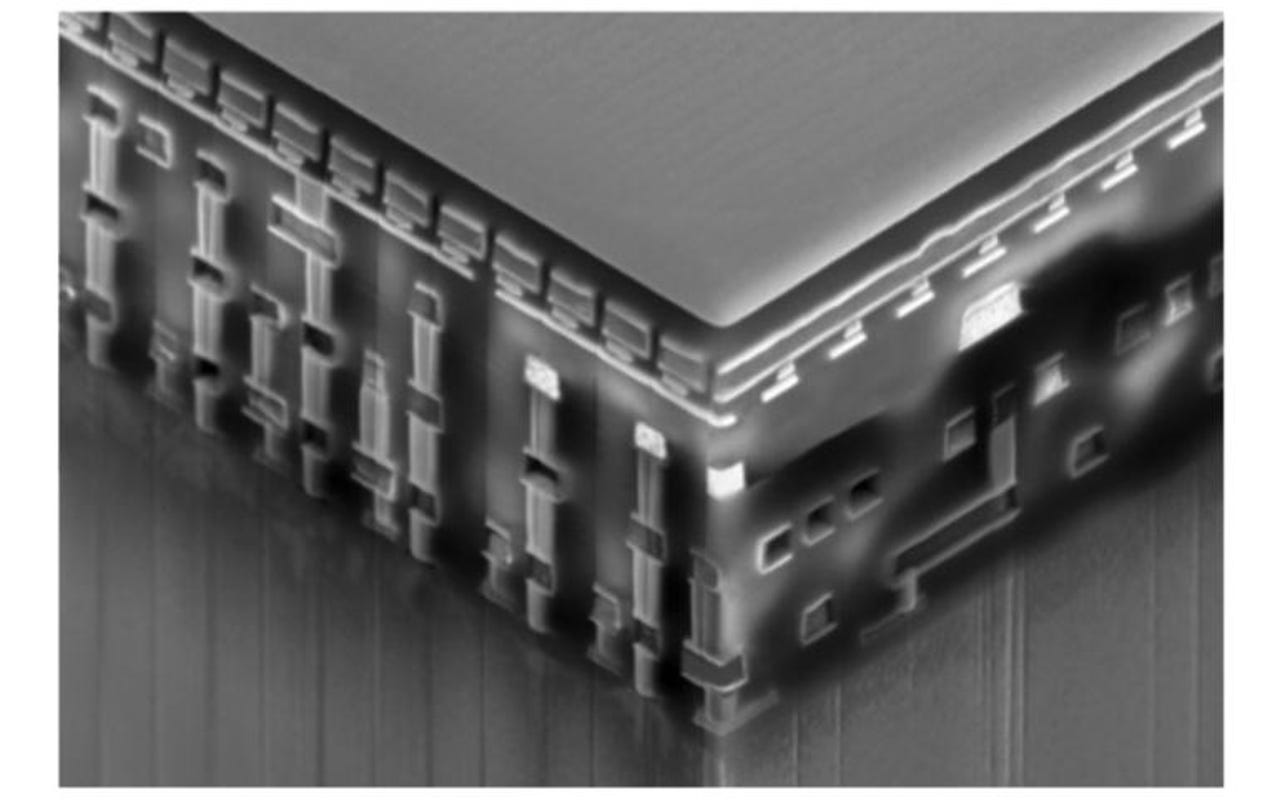Crossbar aims to bury Intel's 3D XPoint with superior technology


Crossbar CMOS chip.
Intel got the non-volatile RAM (NVRAM) race off to a roaring start in late 2015, with their hasty annoucement of 3D XPoint NVRAM. But they stumbled out of the gate when they had to dramatically scale-back some specs while pushing out availability a year.
3D XPoint is not only less than they claimed, but they are adding a proprietary hogtie to their CPUs. Potential users are wondering how that helps anyone other than Intel.
Competition
Enter Crossbar. Founded in 2010, Crossbar has designed a filimentary ReRAM with excellent performance, scalability, and manufacturability.
Crossbar says writes are 1,000x faster than NAND flash, at 1/20th the power consumption, and with over 1,000x the endurance of flash. Not quite as fast or durable as DRAM, but surprisingly close - and much more power effficient than flash or DRAM - perfect for mobile devices and IoT. And it performs well over a wide temperature range, from -40C to 125C.
Manufacturability is critical to achieving volume, and here Crossbar has an excellent story as well. They can use a standard CMOS fab, adding a couple of steps at the tail end of the process, using existing tools and processes, and they have an easy 3D stacking design to achieve high density.
But 3D isn't their only path to density. They've also demonstrated that their design can shrink to feature sizes of less than 8nm, while also increasing the ratio between ON states and OFF states. They could produce 1TB chips in a few years, given smaller feature sizes and enough layers.
NAND flash, on the other hand, had to go the 3D route because as features sizes shrink, endurance and stability decrease. Stacking flash cells is the only way that vendors could increase density.
The Storage Bits take
3D XPoint's clumsy start has been a blessing to NVRAM companies like Crossbar and Nantero. The slippage in schedule and specs has given them breathing room, while the software folks - Microsoft in particular - responded with an urgency that no startup could command.
With Intel 3D XPoint partner Micron strangely silent on their plans, there may be more potholes on the 3D XPoint roadmap than we've heard about. But the good news for us consumers of fine storage technology is that it looks like we'll have more choices for NVRAM than expected.
Now it's time for wizard architects and designers to figure out how to create awesome devices and systems using NVRAM's capabilities.
Courteous comments welcome, of course.